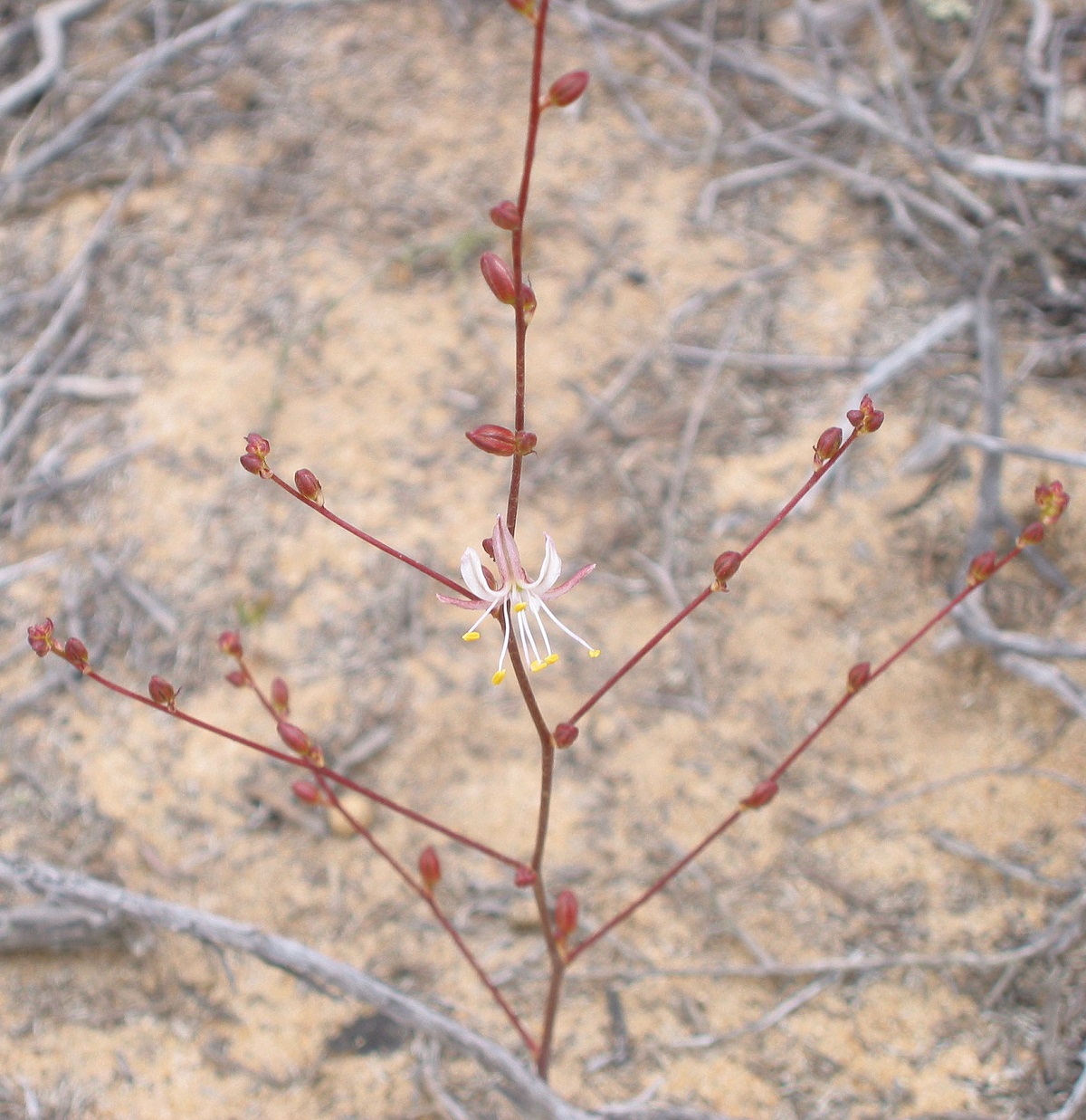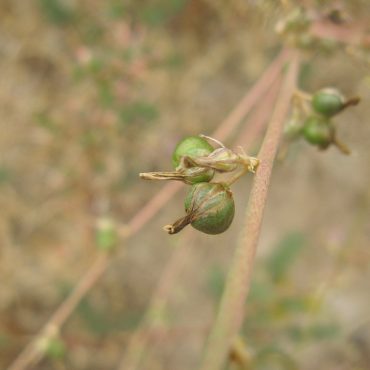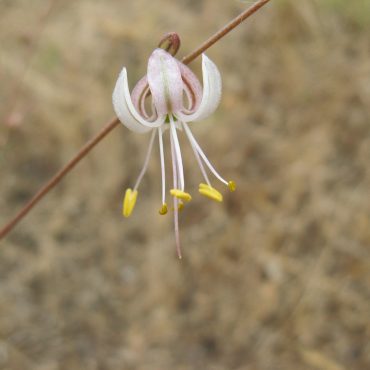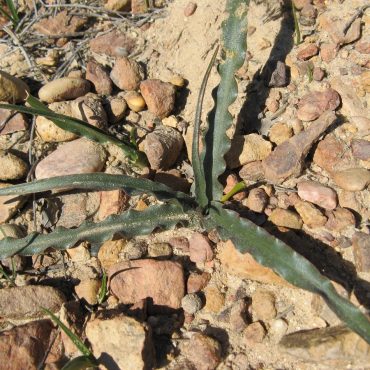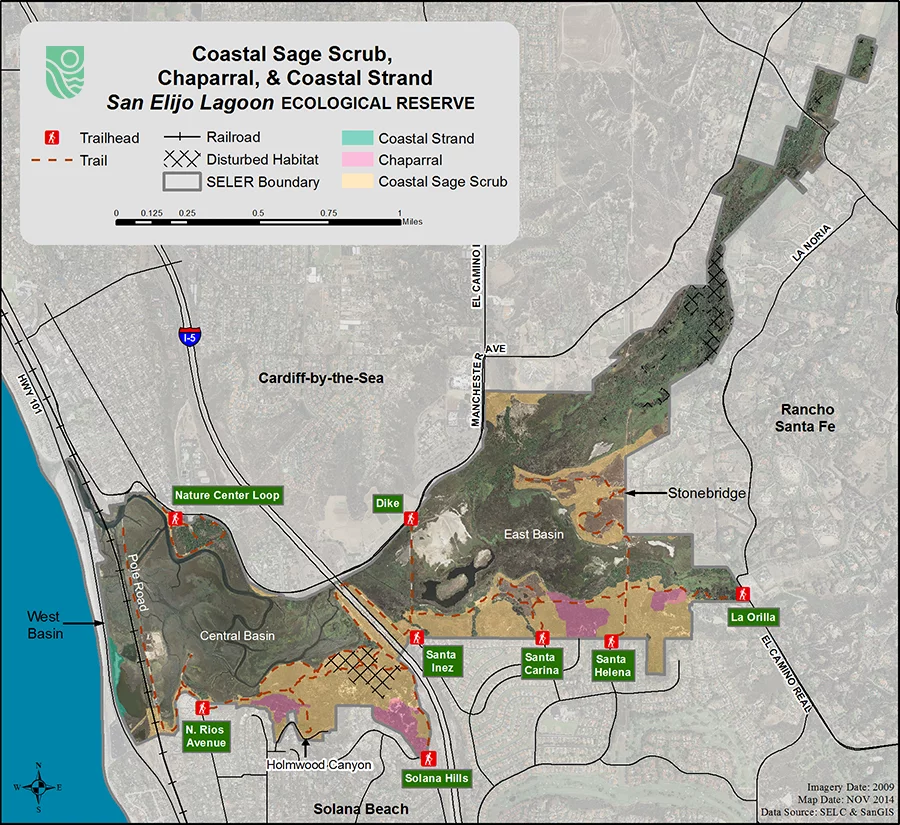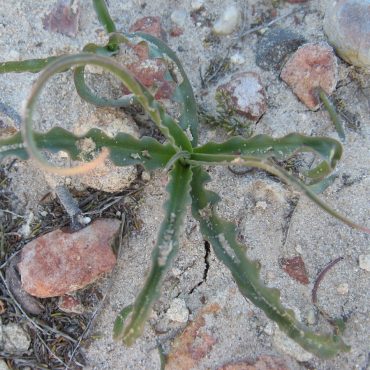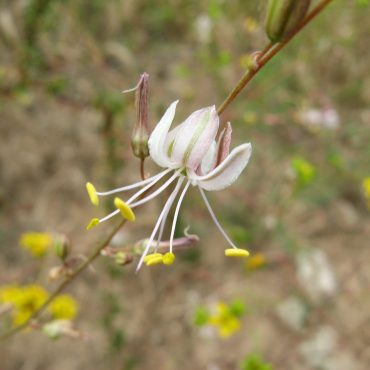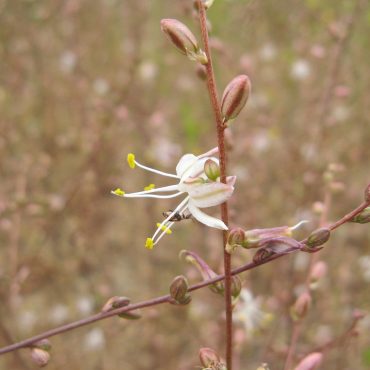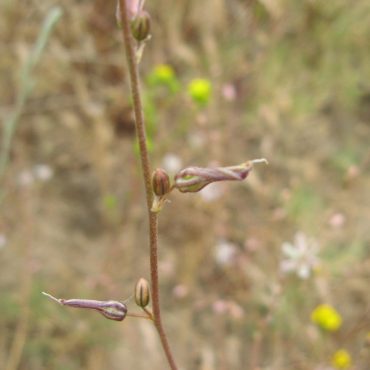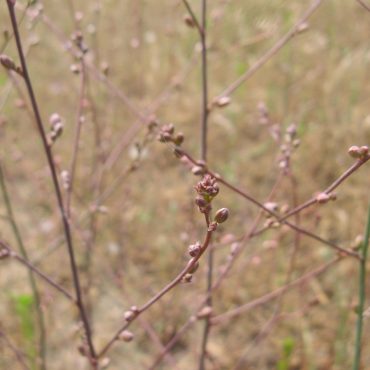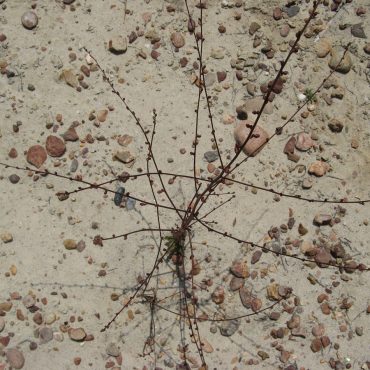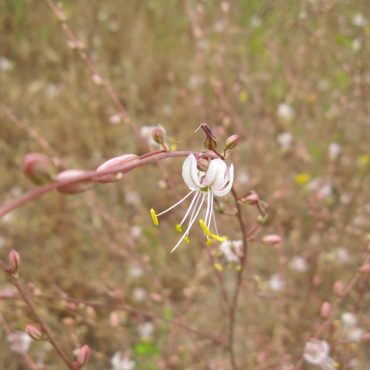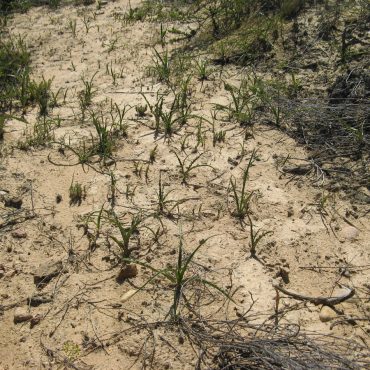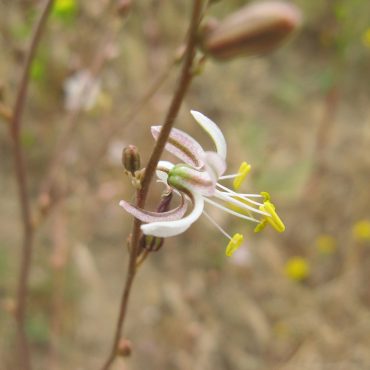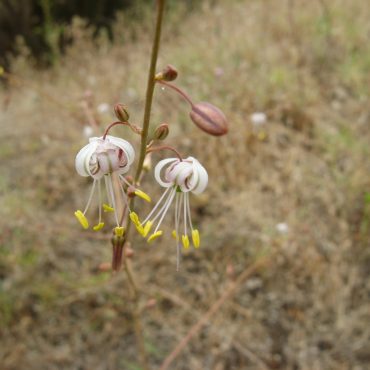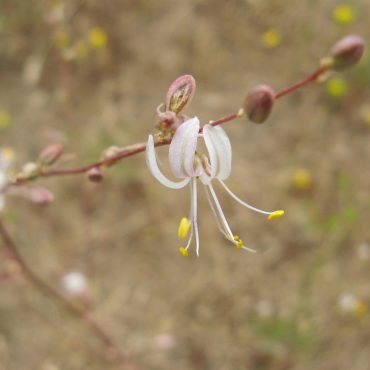Classification
Small flowered soap plant is a perennial Monocotyledon (Monocot) in the agave family (Agavaceae). Monocots are an early offshoot of flowering plants, partly characterized by having a single cotyledon (instead of two), by having parallel veins in the leaves (instead of reticulated) and by having flower parts in multiples of three (instead of fours or more).176
The agave family is in a state of flux.41 As of 2017, the source we follow,2 retains the agave family as a separate family. Others place it as a subfamily of the asparagus family (Asparagaceae).41,143 It has also been considered a subfamily under the lily family (Liliaceae).11
Members of the agave family are often found in dry habitats.76 They are characterized by rosettes of stiff, fibrous leaves11,76 and by a fruit with two or more chambers that becomes dry and splits open at maturity.44 Many have large, erect, conspicuous flower clusters,41 although small flowered soap plant is clearly an exception. In the Reserve, we have four species in the agave family. In addition to the delicate soap plant, there are three tall, statuesque agaves and yuccas: Shaw’s agave (Agave shawii), Mojave yucca (Yucca schidigera) and chaparral yucca (Hesperoyucca whipplei).
Chlorogalum is a small genus of only five species, all restricted to California and northern Baja California.7 Small flowered soap plant is the only species found in the Reserve.
NOTE: In 2018, several years after this writing, the genus Chlorogalum was split into two.535 The small flowered soap plant and another species were moved into a two-species genus, Hooveria, based upon DNA analyses, the fact that they bloom diurnally instead of nocturnally and small morphological and cytological differences.
Jepson eFlora Taxon Page

